A poker straight is made by having 5 consecutive cards, for example T♣9♥8♦7♣6♣. The Ace can be used for the lowest and highest possible straight, AKQJT and 5432A, with the lower known as a wheel straight. But they can’t wrap around the Ace when not starting or ending on it, like 32AKQ wouldn’t be a valid poker straight but just a high card hand with only these cards.
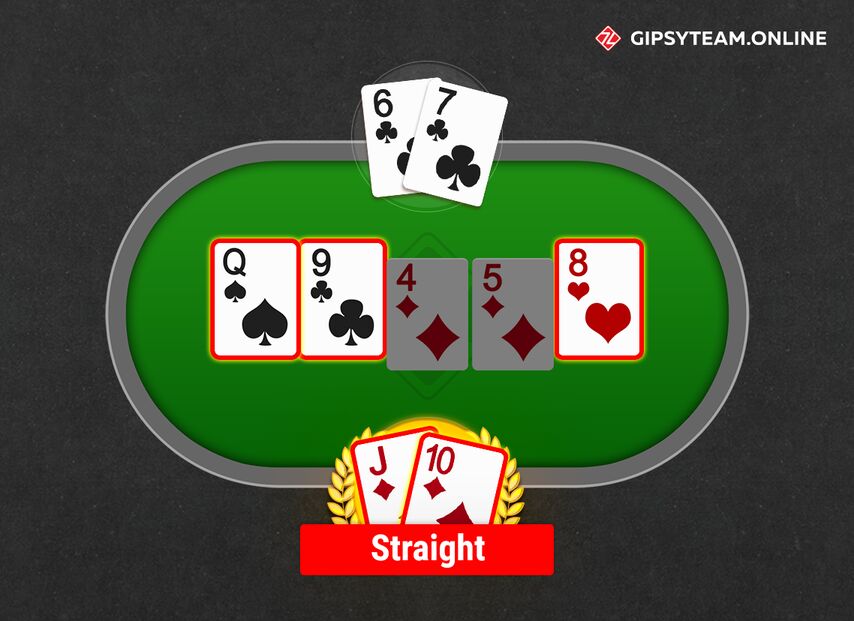
If all the cards in the straight have the same suit, it is a straight flush poker hand which is in a much stronger category, beating flushes, full houses and 4 of a kind.
How does a Straight rank?
Straights win against:
- 3-of-a-kind
- 2 pairs
- Pairs
- High card
- But lose against:
- Flushes
- Full Houses
- 4-of-a-kind
- Straight Flush Poker
- Royal Flushes
On non-paired boards with no more than 2 cards of the same suit, straights are the strongest hand because no better hand is possible to make.
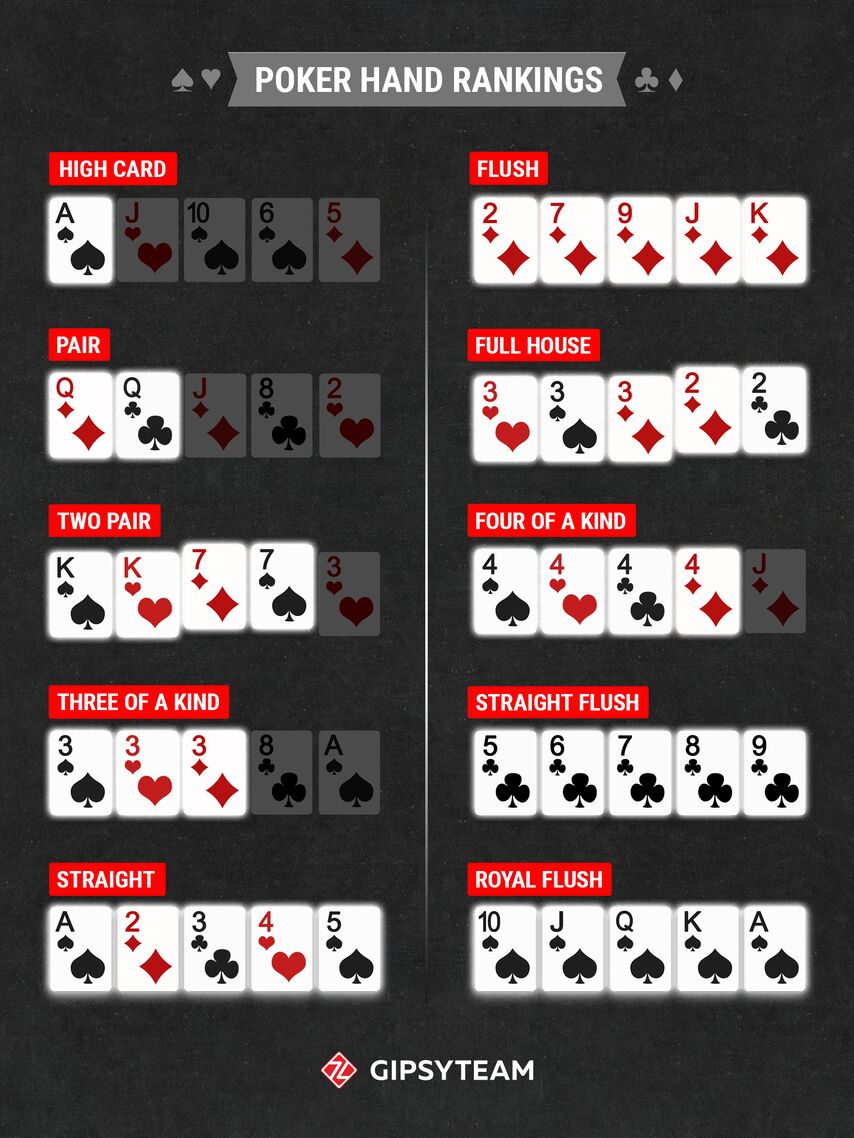
Which hands are the best for making straights?
The more connected a hand is preflop (meaning the smaller the gap between your two cards), the more straights can be made using both hole cards, and only needing 3 to be dealt out.
When the cards are near the top or bottom of the deck, they can make fewer straights even if connected because straights can’t wrap around, for instance 32 can only make 2 straights using both cards. However, two high connected cards may have other good properties that make you want to play them, like being able to make strong pairs and when they do make a straight it will usually be at the higher end of it and rarely dominated.
Straight Draws
Before the river if you have 4 cards out of a consecutive 5 and need one more to be dealt to complete it, this is known as a straight draw. When they are 4 in a row and have 2 possible outs it is a stronger draw than requiring specifically the one center card. It can be decided whether to continue with these hands by considering their probability of completing, for which a guide is given below, and whether you already have other made hands like a pair.
On the flop, if you have 3 cards out of a possible straight and need both the turn and river to make it, this is called a backdoor straight draw. There is a low probability of this happening, so it isn’t a big improvement to your hand.
Ways to make a Straight
5 straight card boards
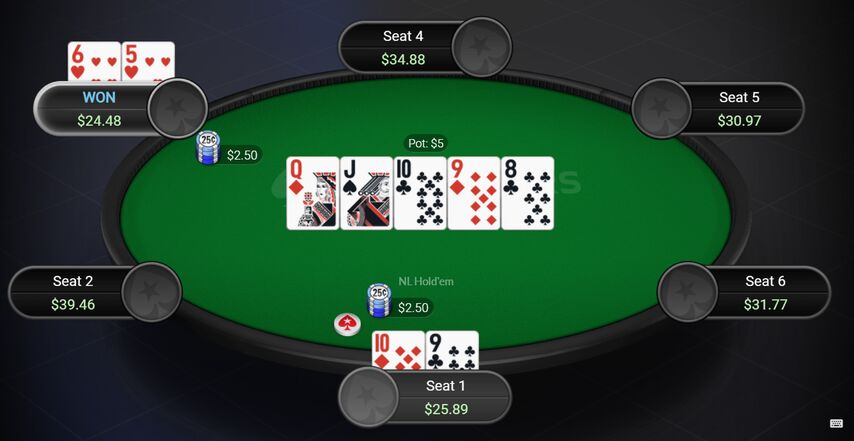
On these, everyone can use the 5 community cards to make a straight so players will chop unless someone can make a better straight by having cards that add on the high end or make a flush if this possible or a straight flush poker hand.
4 straight card boards
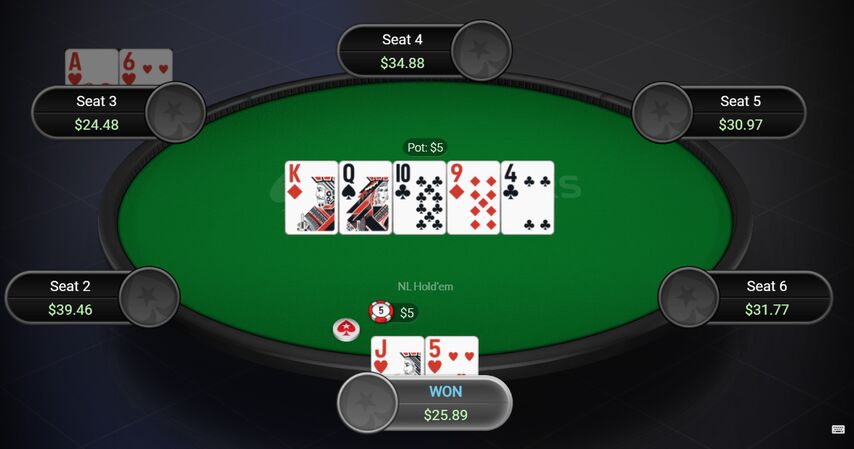
Here you can make a straight using only one of your cards, although using both will give a stronger one when added to the top giving a higher straight. If the 4 cards are all connected there are two 1-card-straights to make (a high and low one), but if there’s a gap only 1 is possible.
3 straight card boards
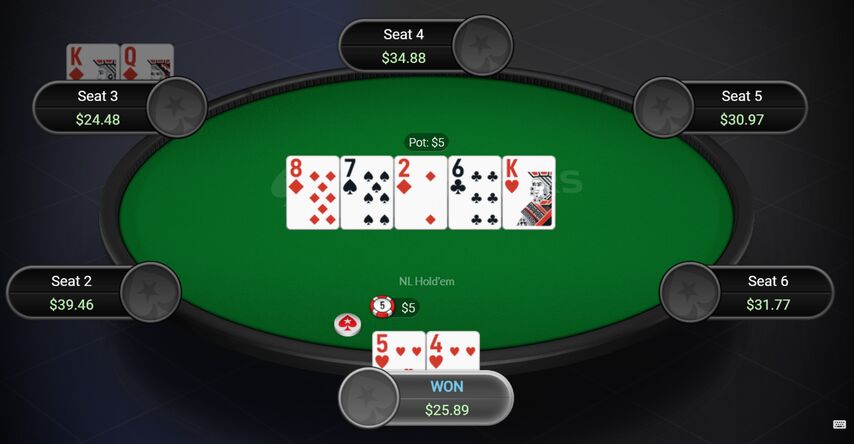
On these boards you need to use both hole cards to make a straight. On the most connected boards like 765XX with 3 cards in a row, 3 different straights can be made compared to when it is the most disconnected like 864XX with 2 gaps only 1 straight is possible.
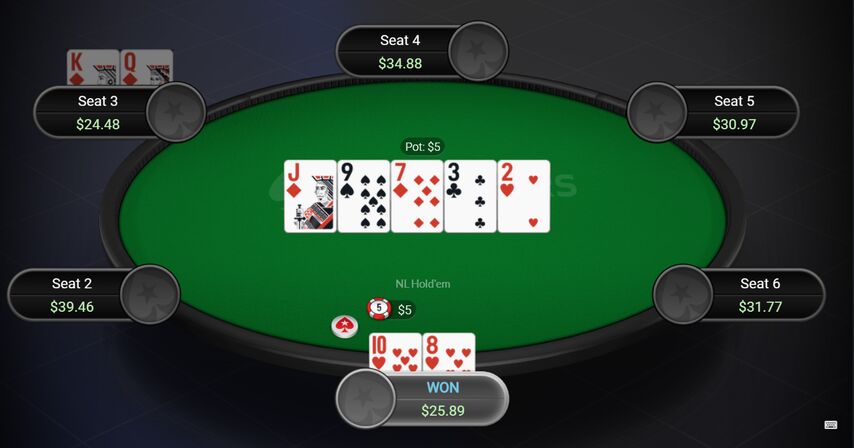
The more connected a board is, the easier for the rest of your table to make straights too and so should be aware a low one may be dominated more. On high connected boards this could be even more likely than low ones when players will have folded more low card hands earlier on because they are weaker.
- Increased first deposit bonus
- Increased rakeback and reloads
- Help with deposits and cashouts
- Access to private freerolls
- Round-the-clock support
Probabilities
The following guide shows the odds of making a straight when you have certain hands.
With a gutshot draw (which has 4 outs to a straight), the odds on the flop of making a straight on the turn is 8.5%, 18.7% by the river, and 8.7% to complete on the river from the turn.
For an open-ended straight draw (with 8 outs), the odds of completing on the turn is 17.0%, 31.5% by the river, and 17.4% from the turn to river.
The table below shows the probabilities of making a straight by each street when starting with hands of different connectedness:
| Making a straight on the flop | Making straight by turn | Making straight by river | |
|---|---|---|---|
| Connected hand (eg 76) | 1.3% | 4.4% | 9.3% |
| 1 gap (75) | 0.98% | 3.5% | 8.0% |
| 2 gaps (85) | 0.65% | 2.7% | 6.6% |
| Disconnected (T5) | 0% | 1.0% | 4.0% |
As we can see, having 2 closer cards will make a straight more often because there are more possible poker straight combinations that use both of your cards and only require 3 from the deck.
Non Holdem Games
In Omaha, you must use exactly 2 of your hole cards and 3 from the board to make your hand. Hands which cover the high and low part of the deck will make straights more because they don’t block their own straight outs and can connect with both low and high runouts.
Because everyone has more cards in play, the relative hand strength is lower compared to Holdem and so should be more careful to not overvalue hands.
In Short Deck, the probability of making a straight is higher because there are fewer ranks and all cards are closer together. When dealt a random 5 cards, they will be a straight 1.6% of the time, and better hand classes like full houses are also easier to make so it’s not such a strong hand as in Holdem.
We have articles for all poker hands and combinations which you may want to look through.























